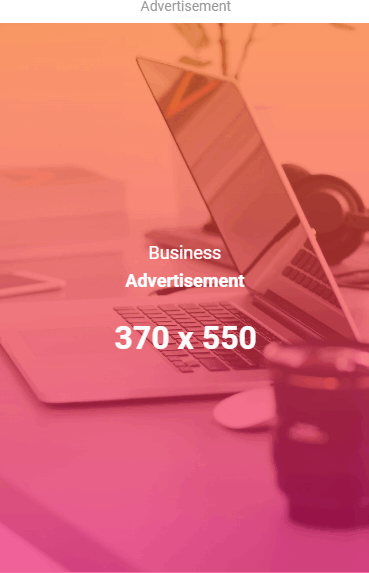A Complete Guide to Pay-Per-Click Advertising (PPC): Strategies to Maximize ROI
Pay-Per-Click (PPC) Advertising Guide
Pay-Per-Click (PPC) advertising is one of the most effective digital marketing strategies to drive targeted traffic, generate leads, and achieve measurable results. With the ability to position your brand at the top of search engine results, PPC provides businesses with an edge in the competitive digital landscape.
This guide explores the essentials of PPC advertising, its benefits, and actionable strategies to optimize your campaigns for maximum return on investment (ROI).
What is Pay-Per-Click (PPC) Advertising?
PPC advertising is a digital marketing model where advertisers pay a fee each time their ad is clicked. Instead of earning visits organically, PPC enables businesses to buy visits, ensuring instant visibility on search engines and other online platforms.
Popular PPC platforms include:
- Google Ads: For search engine advertising on Google.
- Microsoft Advertising: For ads on Bing and Yahoo.
- Social Media Ads: Platforms like Facebook, Instagram, LinkedIn, and Twitter offer PPC options.
- Display Networks: Banner ads on partner websites through networks like Google Display.
Benefits of PPC Advertising
PPC offers unique advantages that make it a preferred strategy for many businesses:
- Instant Results - Unlike SEO, which takes time to show results, PPC campaigns deliver immediate visibility and traffic as soon as they go live.
- Highly Targeted - PPC allows precise audience targeting based on:
- Keywords
- Location
- Device
- Demographics
- Interests and behaviors
- Cost-Effective - You only pay when someone clicks on your ad, making it a cost-effective way to reach potential customers.
- Measurable Results - With PPC, you can track metrics like clicks, impressions, conversions, and ROI in real time, allowing for better decision-making.
- Complements SEO - PPC and SEO work well together. While SEO drives organic traffic, PPC ensures your brand stays visible for competitive keywords.
Key Components of a PPC Campaign
To succeed in PPC advertising, it’s crucial to understand its core components:
- Keywords - Keywords are the backbone of PPC campaigns. Choosing the right keywords ensures your ads appear in relevant searches. Use tools like Google Keyword Planner or SEMRush to identify high-performing keywords.
- Ad Copy - Your ad copy needs to be compelling and relevant to encourage clicks. An effective ad copy includes:
- A clear headline
- Relevant keywords
- A strong call-to-action (CTA)
- Emotional or value-driven triggers (e.g., “Save 20% Today!”)
- Landing Pages - A well-optimized landing page is essential for converting clicks into customers. Key elements include:
- Relevance to the ad
- Clear messaging
- Fast loading times
- Mobile responsiveness
- Bidding Strategy - PPC platforms use a bidding model where you compete with other advertisers for ad placement. Popular bidding strategies include:
- Manual CPC: Set a maximum bid for each click.
- Target CPA: Focus on optimizing for a specific cost per acquisition.
- Maximize Conversions: Automatically adjust bids to drive the most conversions within your budget.
- Ad Extensions - Enhance your ads with additional information such as:
- Sitelinks
- Call buttons
- Location details
- Reviews and ratings
Steps to Create a Successful PPC Campaign
Follow these steps to create and optimize your PPC campaigns:
- Set Clear Goals - Define your objectives before launching a PPC campaign. Common goals include:
- Increasing website traffic
- Generating leads
- Driving sales
- Building brand awareness
- Conduct Keyword Research - Identify relevant keywords that align with your goals and audience intent. Categorize them into:
- Broad Match: To capture a wide audience.
- Exact Match: For highly specific searches.
- Negative Keywords: To exclude irrelevant searches and reduce wasted spend.
- Create High-Performing Ads - Write ad copy that is concise, engaging, and aligned with the search intent. Use numbers, offers, or urgency to make your ads stand out.
- Design Optimized Landing Pages - Ensure your landing pages are tailored to the ad’s promise. Include a clear headline, persuasive copy, and a strong CTA.
- Set a Budget - Decide how much you’re willing to spend on your campaign. Start small and scale your budget as you gather performance insights.
- Launch and Monitor - Once your campaign is live, monitor its performance. Track metrics like:
- Click-through rate (CTR)
- Conversion rate
- Cost per click (CPC)
- Quality Score
- Optimize for Better Results - Analyze your campaign data and make adjustments. A/B test ad copies, adjust bids, and refine targeting to improve ROI.
Common PPC Advertising Mistakes to Avoid
Avoiding these common mistakes can save your budget and improve campaign performance:
- Ignoring Negative Keywords - Failing to exclude irrelevant keywords can lead to wasted ad spend and lower ROI.
- Poor Ad Copy - A generic or irrelevant ad copy fails to capture attention and drive clicks.
- Neglecting Landing Page Optimization - Sending traffic to poorly designed or irrelevant landing pages reduces conversion rates.
- Overlooking Mobile Optimization - A significant portion of traffic comes from mobile devices. Ensure your ads and landing pages are mobile-friendly.
- Not Monitoring Campaigns - PPC campaigns require continuous monitoring. Ignoring performance data can result in lost opportunities.
Best Practices for PPC Advertising
Maximize the effectiveness of your PPC campaigns with these best practices:
- Conduct Regular A/B Testing - Test different elements of your ads, such as headlines, descriptions, and CTAs, to identify what resonates best with your audience.
- Focus on Quality Score - Google Ads assigns a Quality Score to your ads based on their relevance, CTR, and landing page quality. A higher Quality Score reduces your CPC and improves ad placement.
- Leverage Ad Extensions - Ad extensions enhance your ads and provide additional information, increasing CTR and visibility.
- Use Remarketing - Target users who have already interacted with your website or ads through remarketing campaigns, which often yield higher conversion rates.
- Analyze and Refine - Use tools like Google Analytics and SEMRush to analyze performance data. Optimize your campaigns based on these insights for better results.
Types of PPC Advertising
Here are some popular types of PPC advertising to consider for your business:
- Search Ads - These text-based ads appear on search engine results pages (SERPs) when users search for relevant keywords.
- Display Ads - Display ads appear on websites within Google’s Display Network. They often include images, videos, or banners.
- Social Media Ads - Platforms like Facebook, Instagram, and LinkedIn allow advertisers to create targeted PPC campaigns based on user demographics and interests.
- Shopping Ads - E-commerce businesses can use shopping ads to display products directly in search results with images, prices, and descriptions.
- Video Ads - Video ads on platforms like YouTube engage users with visual content and are highly effective for brand awareness.
- Remarketing Ads - These ads target users who have previously visited your website, encouraging them to return and complete a desired action.
Future Trends in PPC Advertising
Stay ahead of the curve by keeping an eye on these emerging PPC trends:
- AI and Automation - AI-driven bidding strategies and ad optimization are making PPC campaigns smarter and more efficient.
- Voice Search Optimization - With the rise of voice assistants, optimizing ads for voice search queries is becoming essential.
- Visual Search Integration - Visual platforms like Pinterest are integrating visual search capabilities, allowing users to search using images.
- Privacy-First Advertising - As privacy regulations evolve, PPC platforms are introducing features to ensure compliance while maintaining targeting capabilities.
Conclusion
Pay-Per-Click (PPC) advertising is a powerful way to drive targeted traffic, generate leads, and achieve measurable results. By understanding its components, following best practices, and avoiding common mistakes, businesses can leverage PPC to maximize ROI and stay competitive in the digital landscape.
Whether you’re a beginner or an experienced marketer, the key to PPC success lies in continuous optimization and adapting to changing trends. Start building your PPC strategy today to achieve your marketing goals.





